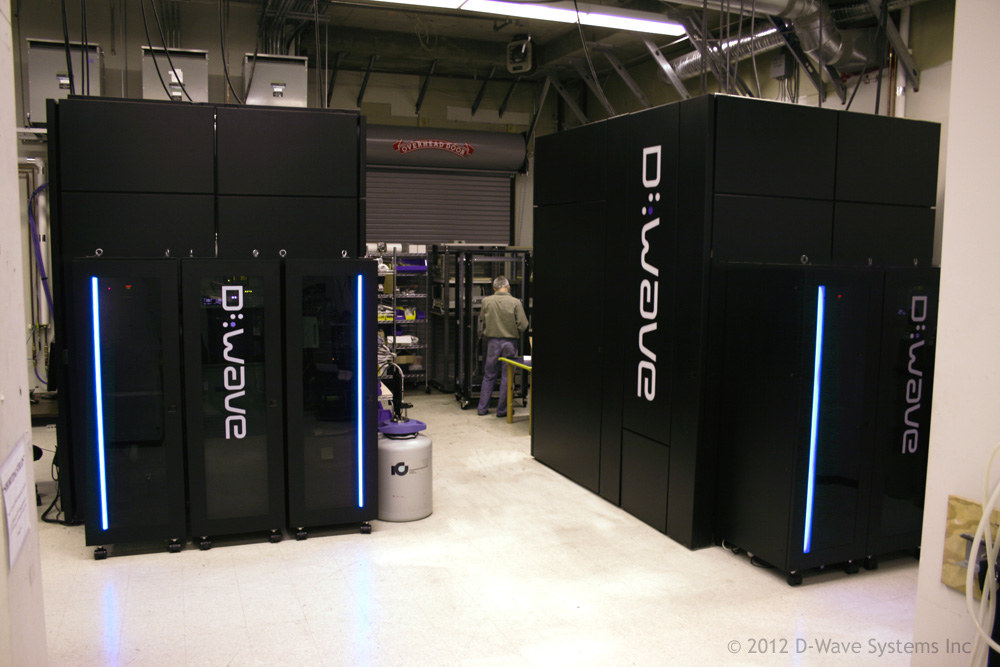A strange computer promises great speed
March 25, 2013

D-Wave One computers (credit: D-Wave)
Academic researchers and scientists at companies like Microsoft, IBM, and Hewlett-Packard have been working to develop quantum computers.
Now, Lockheed Martin — which bought an early version of such a computer from the Canadian company D-Wave Systems two years ago — is confident enough in the technology to upgrade it to commercial scale, becoming the first company to use quantum computing as part of its business, The New York Times reports.
Skeptics say that D-Wave has yet to prove to outside scientists that it has solved the myriad challenges involved in quantum computation.
But if it performs as Lockheed and D-Wave expect, the design could be used to supercharge even the most powerful systems, solving some science and business problems millions of times faster than can be done today.
Ray Johnson, Lockheed’s chief technical officer, said his company would use the quantum computer to create and test complex radar, space and aircraft systems. It could be possible, for example, to tell instantly how the millions of lines of software running a network of satellites would react to a solar burst or a pulse from a nuclear explosion — something that can now take weeks, if ever, to determine.
Cancer researchers see a potential to move rapidly through vast amounts of genetic data. The technology could also be used to determine the behavior of proteins in the human genome, a bigger and tougher problem than sequencing the genome. Researchers at Google have worked with D-Wave on using quantum computers to recognize cars and landmarks, a critical step in managing self-driving vehicles.
D-Wave, a 12-year-old company based in Vancouver, has received investments from Jeff Bezos, the founder of Amazon.com, which operates one of the world’s largest computer systems, as well as from the investment bank Goldman Sachs and from In-Q-Tel, an investment firm with close ties to the Central Intelligence Agency and other government agencies.
The D-Wave computer that Lockheed has bought uses a different mathematical approach than competing efforts. In the D-Wave system, a quantum computing processor, made from a lattice of tiny superconducting wires, is chilled close to absolute zero. It is then programmed by loading a set of mathematical equations into the lattice.
The processor then moves through a near-infinity of possibilities to determine the lowest energy required to form those relationships. That state, seen as the optimal outcome, is the answer.
The approach, which is known as adiabatic quantum computing, has been shown to have promise in applications like calculating protein folding, and D-Wave’s designers said it could potentially be used to evaluate complicated financial strategies or vast logistics problems.
However, the company’s scientists have not yet published scientific data showing that the system computes faster than today’s conventional binary computers. While similar subatomic properties are used by plants to turn sunlight into photosynthetic energy in a few million-billionths of a second, critics of D-Wave’s method say it is not quantum computing at all, but a form of standard thermal behavior.